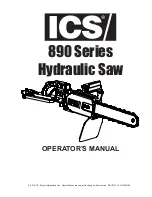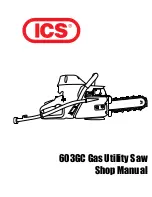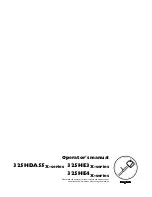
POWE30040
EN
Copyright © 2017 VARO
P a g e
|
11
www.varo.com
13 CUTTING PARTICULARLY TOUGH OR ABRASIVE MATERIALS
Learn to use the tool by cutting wood before attempting to cut anything tougher. When cutting
tougher material, such as metals, more force is required to hold the work piece and clamping
may be required.
Never cut materials that produce toxic dust or fumes such as PTFE or asbestos.
13.1
Sheet metal:
Always set the depth adjustment to at least 1 mm deeper than the material thickness to
avoid the blade riding up over the surface. Scrap material is required underneath the work
surface.
Remove burrs and rust as these impede the feed across the material.
Thick beeswax (furniture polish) applied to the base plate of the tool makes metal cutting
easier.
Only suitable for cutting brass, copper, lead, aluminium or galvanised mild steel.
Every 2 minutes of metal cutting should be followed by a rest of at least 3 minutes.
13.2
Ceramic tiles, slates etc.:
Only use a blade specifically designed for this purpose.
Always use with a suitable vacuum cleaner or dust extractor connected as the dust can be
hazardous to the operator and prevent the guard operating correctly.
13.3
Plasterboard:
The plunge saw is only recommended for making occasional cut outs in plasterboard and
always us it with a suitable vacuum cleaner or dust extractor connected. The dust can
prevent the guard operating correctly.
Conventional tools such as keyhole saws or knives generally give excellent results, though
the plunge saw can be used if a particularly neat, dust free cut is required or if there is a
danger of cutting pipes or cables.
14 CLEANING AND MAINTENANCE
Regular cleaning is required for the safe operation of the tool, as an excessive build-up of dust
will prevent the tool from operating correctly.
The dust extraction hose may block and require cleaning occasionally, especially if damp
wood is being cut.
Unplug from mains supply.
Clean thoroughly with a small soft brush, like a paint brush.
Keep the cooling vents on the motor housing clean and unobstructed at all times.
Never use any caustic agents or solvents to clean the plastic parts.
14.1
Blades
Always use a sharp blade.
If the tool does not cut as well as expected or if it overheats (temperature cut out may trip)
the most common cause is a blunt blade.
It is difficult to see or feel if the blade is blunt. When in doubt use a new blade.
Blades are consumable items.
Beware when changing blades as they can become hot during use. Allow the blade some
time to cool before replacing it.
































